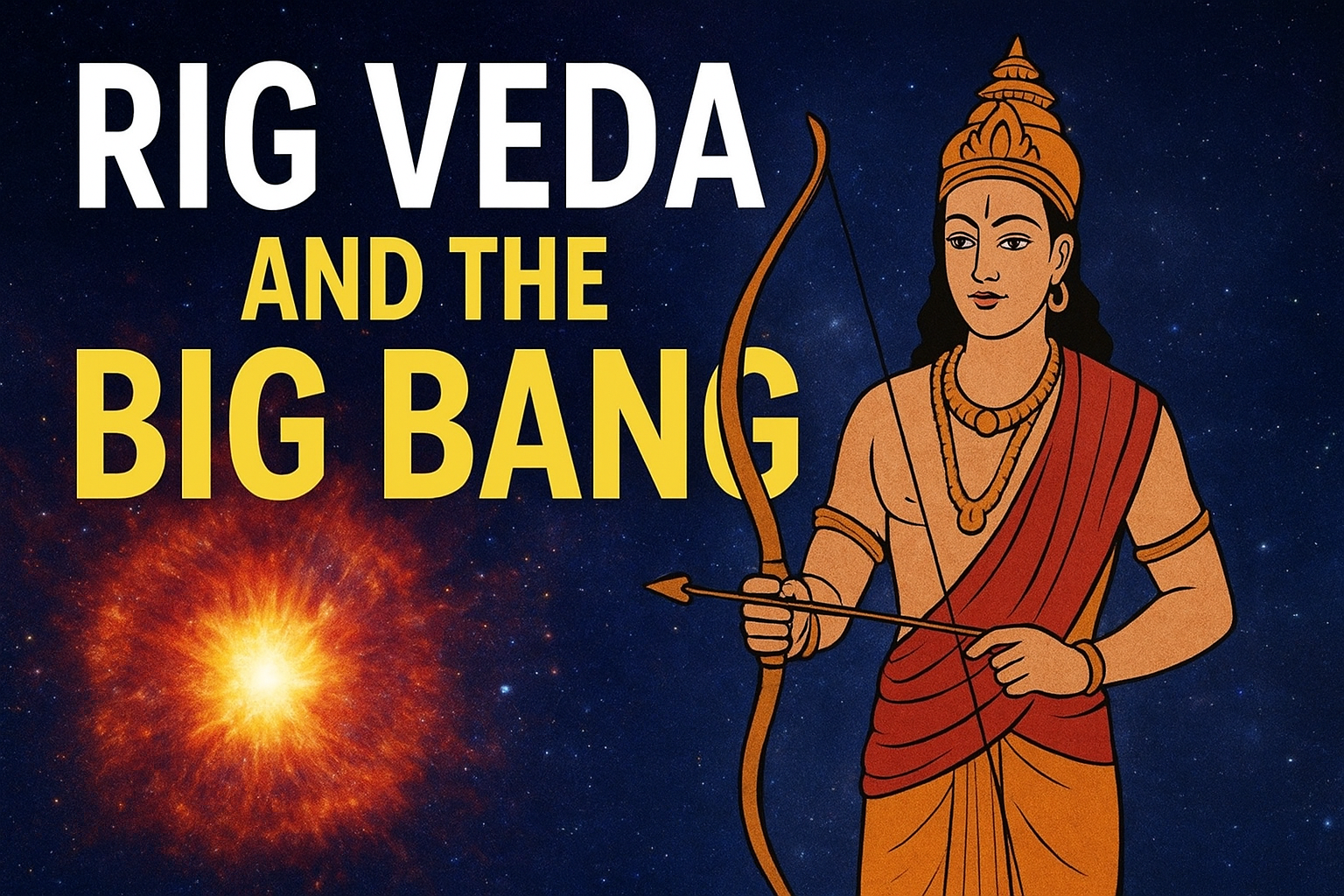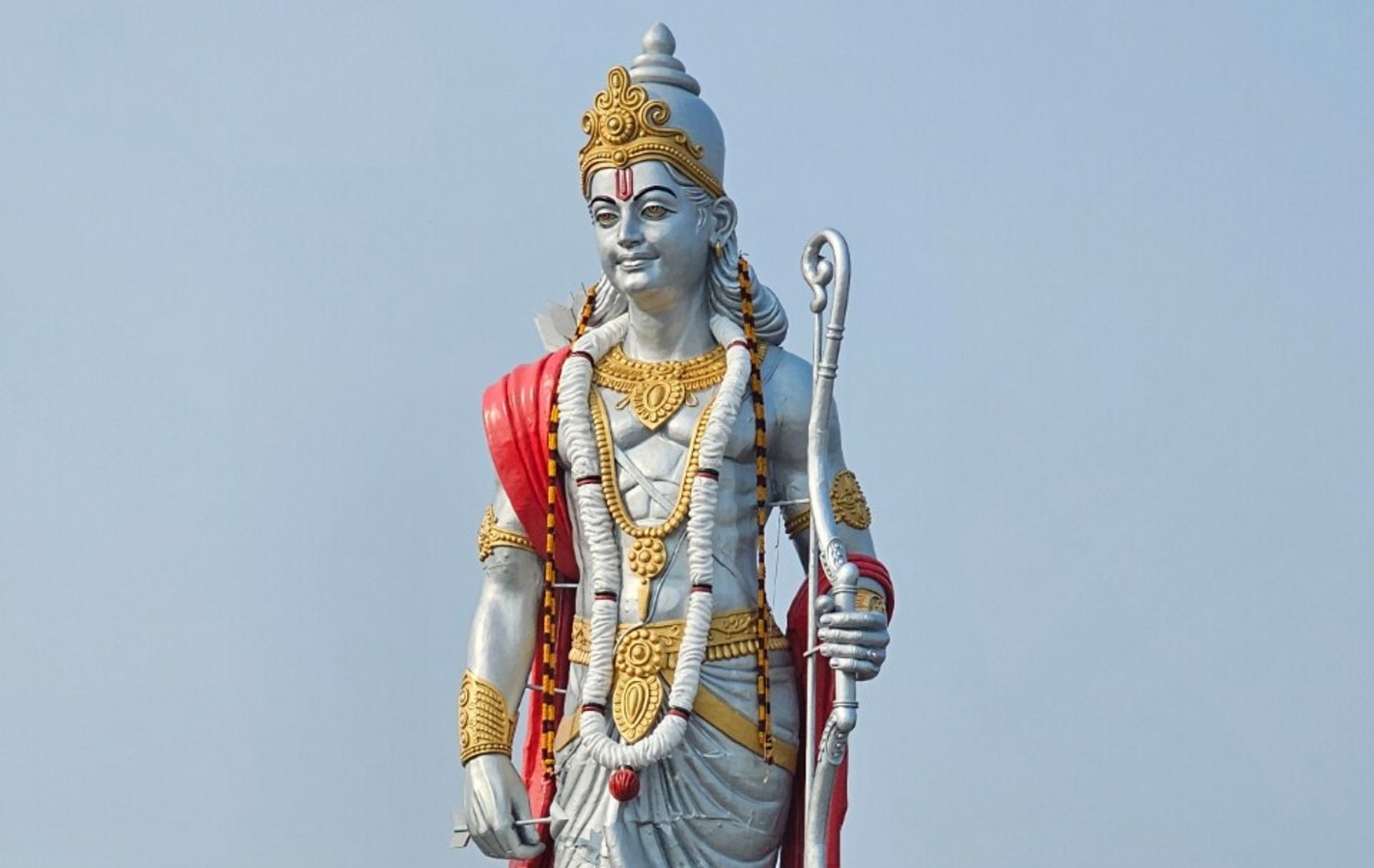
When scientists describe the birth of the universe, they often begin with a single moment — a flash of unimaginable energy known as the Big Bang. Everything we see today, from galaxies to human life, began in that instant of cosmic expansion around 13.8 billion years ago. Strangely, thousands of years before telescopes and equations, the ancient seers of India described a remarkably similar event in the Rig Veda. The world’s oldest known scripture seems to have captured the mystery of creation in verses that mirror what modern science only recently discovered.
The Nasadiya Sukta, also known as the Hymn of Creation, is one of the most famous passages in the Rig Veda. It begins not with clarity, but with a question. It speaks of a time when there was neither existence nor nonexistence, no sky, no space, and not even the breath of life. The hymn says, “Then there was neither death nor immortality, nor was there then the torch of night and day. The One breathed, windless, by Its own impulse. Other than That, there was nothing beyond.”
These lines describe a universe that existed in potential, not in form — a void without space or time. In scientific terms, it sounds like the singularity that preceded the Big Bang, where matter and energy were compressed into a single, formless state. The ancient saints seemed to grasp that creation began not from something, but from nothing — from an invisible and unknowable source that even the gods could not fully understand.
The hymn then continues: “Darkness was hidden by darkness in the beginning; all this was an unillumined sea. That which became was covered by the void. Then the One arose through the power of heat.” This “power of heat,” or tapas in Sanskrit, is remarkably similar to what modern science describes as the release of energy during the Big Bang. According to cosmology, the early universe expanded and cooled from an incredibly hot, dense state, allowing particles to form and eventually combine into stars and galaxies. The Rig Veda’s poetic description seems to capture that fiery emergence, not as a physical explosion, but as a spiritual awakening.
What makes the Rig Vedic vision so extraordinary is not only its similarity to modern theories but also its humility. The hymn ends with a line that could easily come from a scientific debate: “He, the first origin of this creation, whether He formed it all or did not form it, only He knows—or perhaps He does not know.” Even the ancient seers admitted that the origin of the universe might forever remain beyond human understanding. This intellectual honesty, this curiosity without arrogance, is what connects the Vedic worldview to modern scientific thought.
Of course, there are differences. The Rig Veda does not speak of expanding space, cosmic microwave radiation, or elementary particles. Its purpose was not to measure or quantify the universe but to explore its meaning. Yet, the spirit behind it — the search for truth through observation and contemplation — feels surprisingly modern. The Vedic thinkers did not separate science from spirituality. To them, studying the cosmos was another form of worship, a way to approach the ultimate reality, or Brahman.
Modern astrophysicists use complex instruments to look back in time, capturing faint signals from the early universe. The Rig Veda, on the other hand, used meditation and intuition as tools of discovery. Both sought answers to the same question: How did something emerge from nothing? Why does the universe exist at all? This shared curiosity forms a bridge between the laboratory and the ashram, between the scientist and the sage.
Critically, it is important not to claim that the Rig Veda “predicted” the Big Bang. The verses were written as metaphors, not formulas. They reflect philosophical insights, not empirical data. But what they do reveal is that ancient human minds were capable of thinking in abstract, cosmic terms — a quality we often associate only with modern science. The Nasadiya Sukta shows that wonder and inquiry are timeless human instincts, not bound by era or geography.
When we read these ancient hymns today, we should see them not as science textbooks but as mirrors of thought. They remind us that questions about creation have always existed. Long before scientists measured redshifts or theorized quantum fields, humans looked at the sky and asked, “Where did it all come from?” That curiosity gave rise to both poetry and physics.
Perhaps the real connection between the Rig Veda and modern cosmology lies not in details but in approach. Both begin with the unknown and move toward understanding. Both accept that the final truth may always stay just out of reach. The Rig Veda invites reflection, while science invites exploration. Together, they form two sides of the same quest — one seeking meaning through faith, the other through evidence, both united by awe before the infinite.
So when we think of the Big Bang, we can also think of that ancient hymn whispered under Indian skies thousands of years ago. It reminds us that before there was light, there was curiosity; before there was creation, there was thought. And perhaps, in that shared act of wondering, science and spirituality finally meet.


.jpeg)




.jpeg)



.jpeg)



.jpeg)
.jpeg)
.jpeg)


